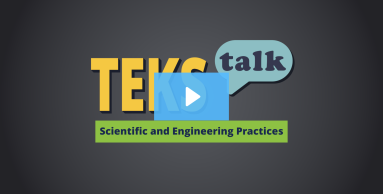- Science
- Grade 5
- Scientific and engineering practices
Science.5.3.A

Knowledge and Skills Statement
The further explanation is designed to be a resource for educators that helps them better understand the topic their students are learning. Further explanations may be written at a more complex level than would be expected for students at the grade level.
Explanations and solutions:
Engineering design is a systematic process for solving engineering problems. It starts with scientific knowledge and models of the material world. Each proposed solution balances competing criteria—desired functions, technological feasibility, cost, safety, esthetics, and compliance with legal requirements.
Models:
Both scientists and engineers use models. Physical models show how things look or work in the real world. Conceptual models represent relationships and describe how things work or fit together. Mathematical models use mathematical equations, theories, formulas, and proofs. Simulations allow for the control of variables and mimic real-world processes. Examples of models include sketches, diagrams, mathematical relationships, simulations, physical models, and prototypes, and they are used to make predictions about the behavior of a system.
Research
McNeill, Katherine L., and Dean M. Martin. “Claims, Evidence, and Reasoning.” Science and Children 48, no. 8 (April/May 2011): 52–56. http://www.jstor.org/stable/43176206.
Summary: Elementary students in this article use claims, evidence, and reasoning to communicate their findings and support claims. This strategy can be introduced by asking students questions about everyday situations. Students will start by answering a question, providing data to support their answer, and then explaining how it supports their answer. This model can then be applied to any science concept to help students practice using evidence to communicate their findings.
